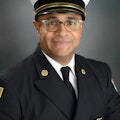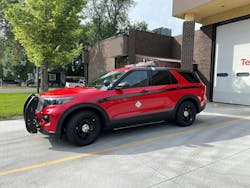The New EMS and Social Work in Today's Fire Service
EMS represents about 70 percent of any given fire department’s calls for service. One could argue that a very high percentage of EMS calls is focused on the unhoused, substance abuse, mental health crises and nursing homes/elder care facilities. As a fire chief, it’s difficult to watch a very expensive piece of equipment and the highly trained professionals who are on board respond to a low-acuity type of call. The notation of this isn’t intended to trivialize what any community member goes through at any moment; however, there certainly are more efficient ways that involve better resources to get those members of the community proper help at that time and to get them moving forward.
The lack of education for physicians in the U.S. healthcare system and the lack of public education on the side effects of painkillers/opioids have created a generational change that has produced sweeping negative effects on our society that will be difficult to reverse. In addition to these self-inflicted wounds, poor federal drug policies as well as the war on drugs and drug cartels, which started to become a losing proposition in the late 70s, have contributed to our current situation.
The pressure on the system
What transpired over the past four or five decades doesn’t really matter. What is happening now is fire departments—generally tasked with being the catchall for when a community is unsure of what to do with a problem—once again are charged with trying to solve or stem a national epidemic. Once more, departments are being asked to do more with the same number of resources or fewer. Some are lucky enough to have support from their elected officials and their community to tackle this issue, but, unfortunately, there is no answer to mitigate the problem. We can only take the pressure off of our responders by creating new avenues, alternative response units (ARUs) and redeployment of resources to keep costs down and to be efficient and good stewards of our taxpayers’ money.
In my department, we found the development and implementation of ARUs to be highly effective in keeping the wear and tear off of the quickly approaching $1 million engines. We have fewer interrupted multicompany drills, a higher state of readiness for our engine and truck companies and more personnel for low-frequency/high-risk incidents. This has been a great money saver in terms of fuel consumption as well.
Another resource is the use of a crisis response unit, or CRU, of some configuration. This can vary in complexity and size based on a community’s particular needs, uniqueness and nuances, but all achieve the same goal. A CRU is essentially similar to an ARU but is used for a more focused demographic, such as substance abuse, the unhoused and mental health crises. This deployment model tackles the same issues as the ARU but also provides a quicker turnaround for a police department to get back into service for other types of calls. Another benefit: So-called superusers get into more-definitive care quickly and out of the prehospital setting faster, again to relieve responders of frequent and repetitive usage.
A third resource is mobile integrated health and community paramedicine (CP). If you were looking at a three-step process, this would be your final and most definitive piece.
CP takes a great deal of support, initial investments, and coordination and cooperation from community partners, such as local hospitals. Quite simply and for the sake of brevity, this unit has the proper care providers to ensure that identified community members receive follow-up care without leaving their home—sort of a regular doctor’s visit. Depending on how deeply that a community wants to go, a system could visit with individuals to ensure proper medication intake and could facilitate the means by which the individuals could be in regular communication with their care provider (doctor, nurse) and receive a physical in their own home.
Building robust ARU, CRU and CP programs
First, identify the need. Many jurisdictions, particularly in urban settings, are experiencing these challenges.
Second, compile the data. How many times are your engines responding to low-acuity calls that don’t warrant a full engine response? In our community, 93 superusers accounted for approximately $10 million in taxpayer money for resources that were used in one year.
Third, do your research and determine what system best fits your jurisdiction. There is no one-size-fits-all. Every community has its own subtle nuances.
Using your new data, educate both the public and your elected officials and allow them to figure out how to fund a new program(s).
What proved most important to our community for the two new programs was multifaceted. We proved the overall reduction in maintenance expenses on our equipment; a greater response readiness for engine companies; less interrupted training for multicompany drills; and probably most importantly, a much higher turnaround time for police officers. It used to take police officers 30–45 minutes to clear a scene and be back into service; today, it takes 5–10 minutes.
Once funding is established, implement your program in the way that you see fit but with buy-in from your firefighters and all other support staff.
Finally, continue to monitor. Compile your data at different intervals, such as quarterly, semiannually and annually. You want to be able to ensure that your new program(s) hits certain benchmarks that you hope to achieve.
Partnerships
Some jurisdictions can’t bite into all of this at once and might need help in the form of a community joint venture. We found a partner that had the same vision as we did for our CRU. We had trained EMTs, while our partner had trained mental health professionals to make the responding team.
We also found local and state grants that identify both public and private activities. These grant funds, along with city funding, have helped to offset expenses that were incurred.
As for the CP piece, we are working on a partnership with our local hospitals. The goal is for our department to provide a nationally registered paramedic to pair with a registered and specially trained prehospital care nurse.
The hospitals will be the transporting agency should there be a reason to transport if a patient is found to be unstable.
These types of systems have realized many positive downstream effects, such as ultimately lowering the costs to taxpayers by millions of dollars by the time that a community member has moved completely through a healthcare system. The goal is to prevent superusers, or those who lack the means, from having to enter the local healthcare system without a proper plan for definitive care. A CP program’s intent is to identify the citizen who is in need, identify the problem, formulate a plan and implement the plan before moving the recognized patient into the healthcare system, which, again, could end up costing taxpayers millions in unnecessary taxes.
Recognize unique needs
All of the examples that are noted above offer differing degrees and levels of service, to ensure a healthier community and to relieve pressure off of the 9-1-1 system. Every community is different and must study its own organization to determine specific and unique needs while understanding that the taxpayers, elected officials and the responding agencies must buy in before committing vast resources to make a system work for greater efficiency.
Depending on how creative and committed a community is, this very well could have significant encouraging downstream effects, positively affecting the entire system from prehospital first responders to definitive care.
About the Author

Pepper Valdez
Pepper Valdez is the chief of the Billings, MT, Fire Department and has served for 30 years in the fire service. He has a bachelor’s degree in accounting and a master’s degree in organizational leadership and currently is a student at the Naval Postgraduate School’s Center for Homeland Defense and Security.
